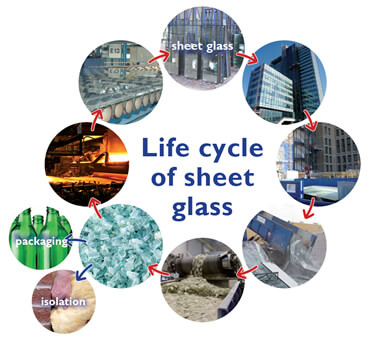Recycling is not a choice, but a necessity. After all, the depletion of the earth’s raw materials has been a growing problem for many years. Our supplies of oil, gas, minerals and metals are being depleted so fast that it is uncertain how much more we can extract from the earth. Recycling is part of the solution to this issue. It is worth separating and collecting any materials that we can in order to recycle them. The same applies to waste sheet glass.
What is sheet glass?
Sheet glass is an umbrella term for the types of glass used in residential and utility buildings (such as offices, health centres and other business premises). It is used in items such as windows and doors. But actually sheet glass has endless applications. The enormous range of properties that the glass can be given during the manufacturing process make it an extremely versatile material. Glass can be used to improve both the interior and exterior appearance of buildings.
The construction sector – both residential and commercial – generates many thousands of tons of waste glass every year. Sustainable demolition and renovation techniques mean that more and more used sheet glass is now being separated at source for recycling.

Dumping sheet glass in landfill as ‘normal’ waste actually costs the ‘dumper’ money. Plus, reusing waste glass reduces the amount of waste that has to be processed by landfill sites. In addition, recycling glass reduces the burden on our environment by reducing the need for ‘fresh’ raw materials to produce new glass. One kilo of cullet can replace over a kilo of sodium carbonate and sand, the two main raw materials for glass. Recycling glass also saves energy and reduces CO2 emissions. Making new glass also requires a lot more energy than recycling old glass. This is because when clean glass cullet is used, the melting temperature in the furnace can actually be considerably lower. In fact, every 10% of cullet that is used in glass manufacturing reduces energy consumption by 2.5% and CO2 emissions by 5%.

